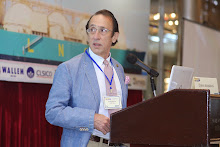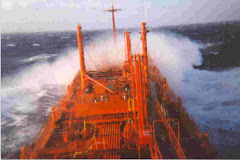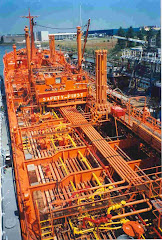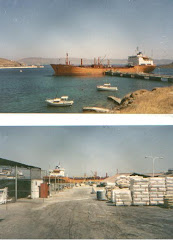TGP is a spin off in Wall Street fashion the last few years. OSG and FRO have also done spin-offs. In this case, the parent company is very much in control.TK is a major world player in the tanker sector. They shun the VLCC market. Their concentration is Suezmax and Aframax units. They are also active in the product sector. The gas business is a relatively new segment of their operation, started in 2004. TK is also in the offshore business. In TGP, their concentration is in LNG units and secondarily LPG units (mainly small vessels on order). They have combined this fleet with a flush of 8 Suezmax tankers.
The LNG market traditionally has been plagued by excessive expectations. The saving grace is the high entry cost and needs for operational expertise that keep the number of players restricted. Nearly all the vessels are on long term charter. The spot market is very small but expected to grow to about 30% of the fleet over the next five years. The charterers are major oil companies so counterparty risk is minimal. The spot market is small.
LNG ships are immense capital investments. The LNG industry is based largely on a series of virtually self-contained projects made up of interlinking chains of large-scale facilities, requiring huge capital investments, bound together by complex, long-term contracts, and subject to intense oversight by host governments and international organizations at every state of the process.
Global LNG demand and demand projections generally remain strong, with base case demand projected to grow by more than 70% from 2007 to 2012, and supply projected to grow by more than 80% over the same period. Average annual trade volume growth to 2012 is 9% for low case, 12% for base case, and 16% for the high case scenario. In the short term, the limiting factor on LNG trade continues to be tight supply. LNG supply project development might be slowed down by this financial crisis. The large amount of new liquefaction capacity is scheduled to come online in 2009-10 and there is danger of excess supply, hopefully of short duration but subject to the fall out of the current economic mess, plunging energy prices and spreading recession.
2008 will set a new record for LNG tanker fleet growth, with 55 or 56 newbuilding deliveries. Most 2009 delivery slots are filled, and yard capacity is becoming tight for 2010 deliveries as well. We can assume moderate additional ordering of up to 4 million m3 capacity (20 vessels) for delivery in 2010, and slightly more for 2011. These are exceptionally difficult contracts to cancel.
So far tanker rates have not suffered the catastrophic plunge of the dry cargo and container sectors. In fact, tanker rates are currently firming with seasonal demand. The LNG/ LPG rates are also steady. What has plagued the sector and particularly TNG is inflation in operational expenses (crew costs and repairs). Whatever the external environment, most of TGP’s fleet is contracted on period rates with escalation provisions for operating costs. Also important is financial expense with their large capital commitments. TGP management seems to have done a good job in containing these expenses and planning their FCF; but in the current financial turmoil, this is an area of risk.
Last August, S&P dropped Teekay’s corporate credit rating from “BB-plus” to the next lowest rating of “BB”, signalling that the company faces major long-term uncertainties but is less vulnerable in the near-term. Not unexpectedly, it is the LNG and Offshore business that is the major source of this debt due enormous capital requirements.
In TGP, there is both bank debt and lease commitments. TGP has a very conservative employment profile matching the debt obligations with long-term employment contracts with first-class charterers. They also have negotiated a very good debt profile as well as covered their financing needs for their newbuilding commitments. They seem to have reasonable margins for debt coverage obligations and in any case, it is less likely that these specialized units will be prone to the same collapse in value as commodity tonnage like bulk carriers. The real risk in asset depreciation is the thin resale market especially in distress situations should the contract commitments be impaired – which is the case for all specialized tonnage.
All in all, TGP has an attractive fleet, good employment and management. Shares are trading at very low levels. The major risk is the impact of the financial crisis on future product demand, especially in view of the fall in energy prices. It is also a potential M&A candidate given the entry barriers in the sector.
LNG ships are immense capital investments. The LNG industry is based largely on a series of virtually self-contained projects made up of interlinking chains of large-scale facilities, requiring huge capital investments, bound together by complex, long-term contracts, and subject to intense oversight by host governments and international organizations at every state of the process.
Global LNG demand and demand projections generally remain strong, with base case demand projected to grow by more than 70% from 2007 to 2012, and supply projected to grow by more than 80% over the same period. Average annual trade volume growth to 2012 is 9% for low case, 12% for base case, and 16% for the high case scenario. In the short term, the limiting factor on LNG trade continues to be tight supply. LNG supply project development might be slowed down by this financial crisis. The large amount of new liquefaction capacity is scheduled to come online in 2009-10 and there is danger of excess supply, hopefully of short duration but subject to the fall out of the current economic mess, plunging energy prices and spreading recession.
2008 will set a new record for LNG tanker fleet growth, with 55 or 56 newbuilding deliveries. Most 2009 delivery slots are filled, and yard capacity is becoming tight for 2010 deliveries as well. We can assume moderate additional ordering of up to 4 million m3 capacity (20 vessels) for delivery in 2010, and slightly more for 2011. These are exceptionally difficult contracts to cancel.
So far tanker rates have not suffered the catastrophic plunge of the dry cargo and container sectors. In fact, tanker rates are currently firming with seasonal demand. The LNG/ LPG rates are also steady. What has plagued the sector and particularly TNG is inflation in operational expenses (crew costs and repairs). Whatever the external environment, most of TGP’s fleet is contracted on period rates with escalation provisions for operating costs. Also important is financial expense with their large capital commitments. TGP management seems to have done a good job in containing these expenses and planning their FCF; but in the current financial turmoil, this is an area of risk.
Last August, S&P dropped Teekay’s corporate credit rating from “BB-plus” to the next lowest rating of “BB”, signalling that the company faces major long-term uncertainties but is less vulnerable in the near-term. Not unexpectedly, it is the LNG and Offshore business that is the major source of this debt due enormous capital requirements.
In TGP, there is both bank debt and lease commitments. TGP has a very conservative employment profile matching the debt obligations with long-term employment contracts with first-class charterers. They also have negotiated a very good debt profile as well as covered their financing needs for their newbuilding commitments. They seem to have reasonable margins for debt coverage obligations and in any case, it is less likely that these specialized units will be prone to the same collapse in value as commodity tonnage like bulk carriers. The real risk in asset depreciation is the thin resale market especially in distress situations should the contract commitments be impaired – which is the case for all specialized tonnage.
All in all, TGP has an attractive fleet, good employment and management. Shares are trading at very low levels. The major risk is the impact of the financial crisis on future product demand, especially in view of the fall in energy prices. It is also a potential M&A candidate given the entry barriers in the sector.









No comments:
Post a Comment